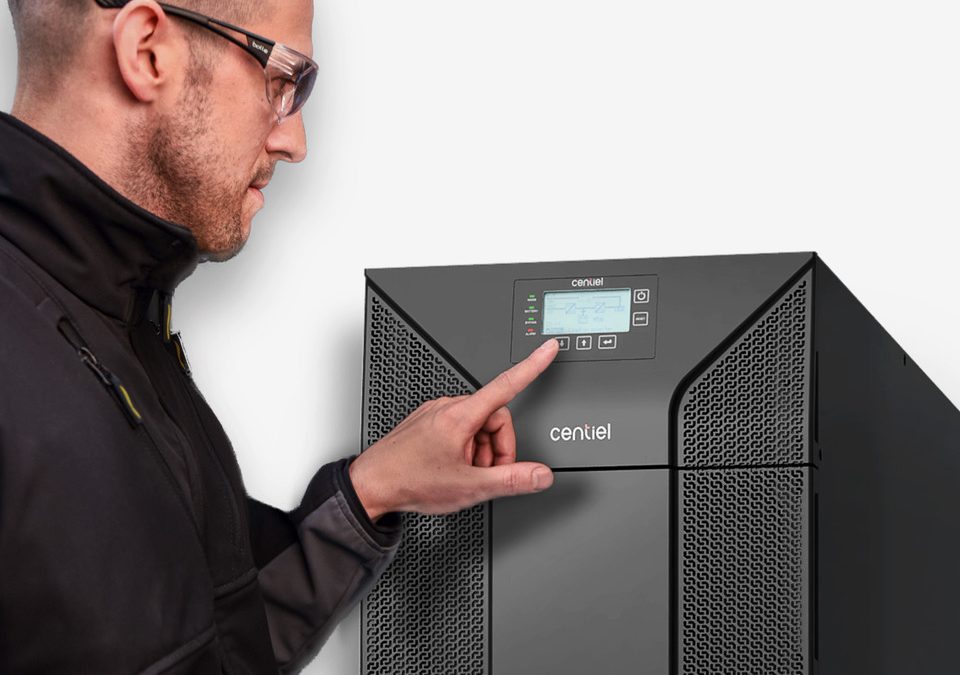There is lots written, and we all know, about availability and resilience through use of parallel redundant UPS topologies be it multiple monolithic units or the Modular design UPS systems.
However, not every application requires such resilience and for these organizations, a stand-alone UPS can be a simple cost-effective solution.
These days, a multitude of stand-alone UPS units are readily available, google uninterruptible power supply systems and there will be a bewildering number of suppliers and manufacturers. However, not every stand-alone UPS offers the same benefits and quality of power protection. So, when it comes to selecting a stand-alone UPS how can smaller organizations ensure they still have ‘best of breed’ power protection for their business-critical applications?
Choosing a quality manufacturer is key. CENTIEL’s stand-alone UPS: PremiumTower for example, uses the same innovative technology incorporated in CENTIEL’s 4th generation modular three-phase UPS system and has an unbeatable on-line operating efficiency of 96.6% which minimizes running costs. PremiumTower is currently available in power ratings of 10kW – 120kW, a range of frame sizes including built-in batteries which significantly reduces footprint to ensure it can fit into even the smallest comms room.
However, it is not just the quality of the UPS system itself which will influence levels of reliability and availability. A system needs to be properly maintained to remain both efficient and reliable and therefore available. When purchasing any UPS system, it is therefore, essential to understand who will be responsible for maintenance and support.
Be sure to analyse the service level agreement (SLA) to find out the guaranteed call response time? Find out what the is included in the schedule of preventative maintenance visits? Is there a 24-hour support hotline? It is also necessary to find out if labour, traveling, and expenses are included and who is responsible for the cost of replacement parts.
Further, if there is no valid warranty or proper maintenance and support contract, the whole power source could be compromised however good or cost-effective the initial technological solution.
The challenge is that cost reduction has become a big driver and criteria for winning contracts, but if cost-cutting compromises the quality of the chosen UPS then the critical load will not be properly protected.
A recent real-life example was where we needed to advise a healthcare facility which had imported a large number of stand-alone UPS units from another manufacturer. Multiple UPS units were simply not working and there had been problems in commissioning the units from day one. There was also frustrating slowness in the communication with, and between, the local supplier and the actual manufacturer.
The major challenge was that a proportion of the UPS units were needed to protect the load in individual operating theatres at the healthcare facility. Without reliable power protection, people’s lives would have potentially been put at risk. Fortunately, the healthcare provider was quick to recognise the issue and address the problem. This is a clear example where up-front cost-cutting could have directly compromised the quality of the UPS system with potentially disastrous consequences.
Where possible look at obtaining your UPS system direct from the manufacturer, or their local subsidiary, so you are talking directly with them in the event of any problems.
The challenge for any manager is to balance the cost of a UPS system and its quality. To achieve this, it is essential to study the technical submittals evaluation documentation carefully regardless of the size of the UPS being purchased.
And, my own personal bugbear…battery systems!! Even with a single standalone UPS unit, you can still provide some resilience, especially in the design of the associated battery system. At the very least utilise two strings of batteries, so that in the event of failure of one string then you still have some battery back-up, individual string isolation is a must!
At CENTIEL our design team works at the forefront of technological development. We are the trusted advisors to some of the world’s leading institutions in this field. For this reason, we have developed both standalone and modular UPS systems which offer industry-leading availability, with low total cost of ownership (TCO) through Maximum Efficiency Management (MEM) and low losses of energy.
This article was originally featured in Electrical Engineering Magazine

